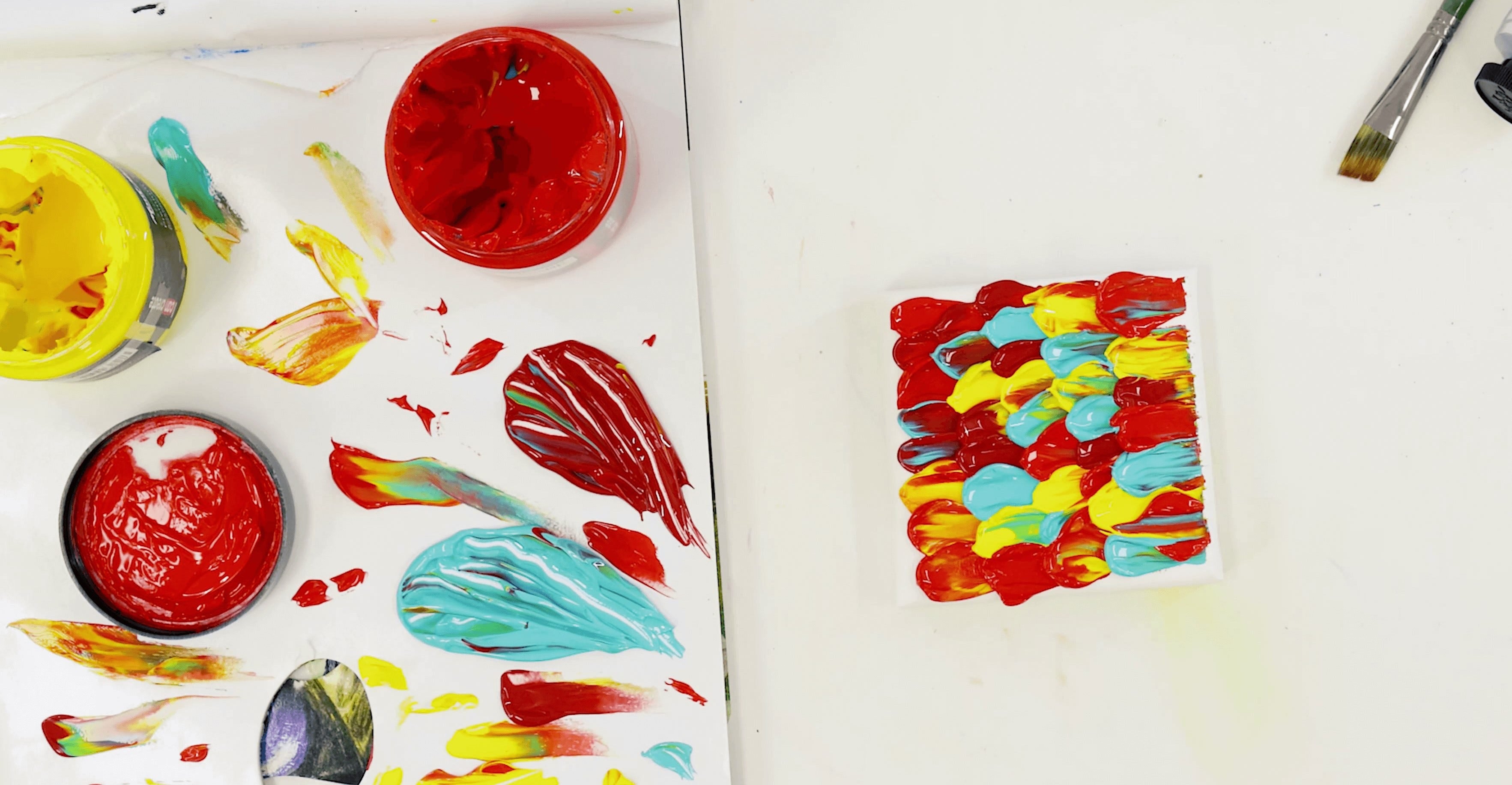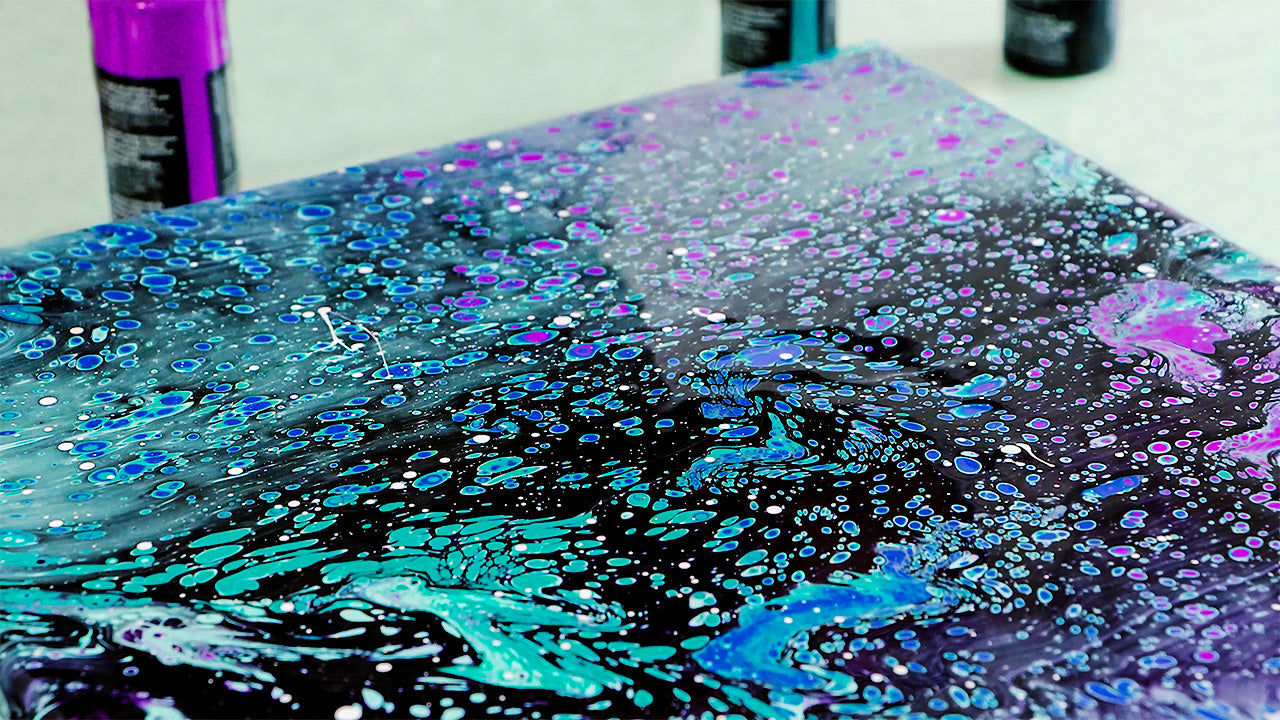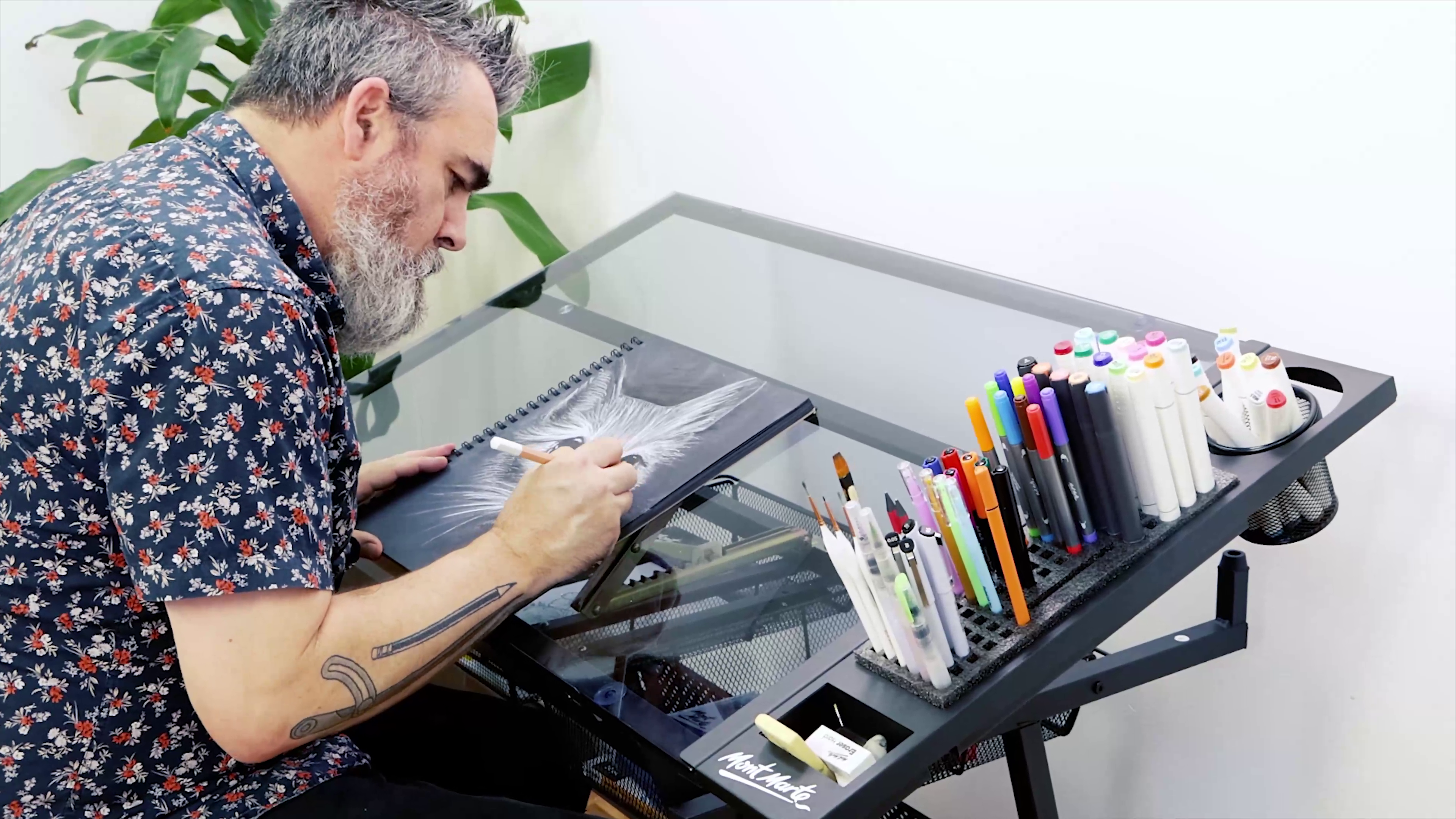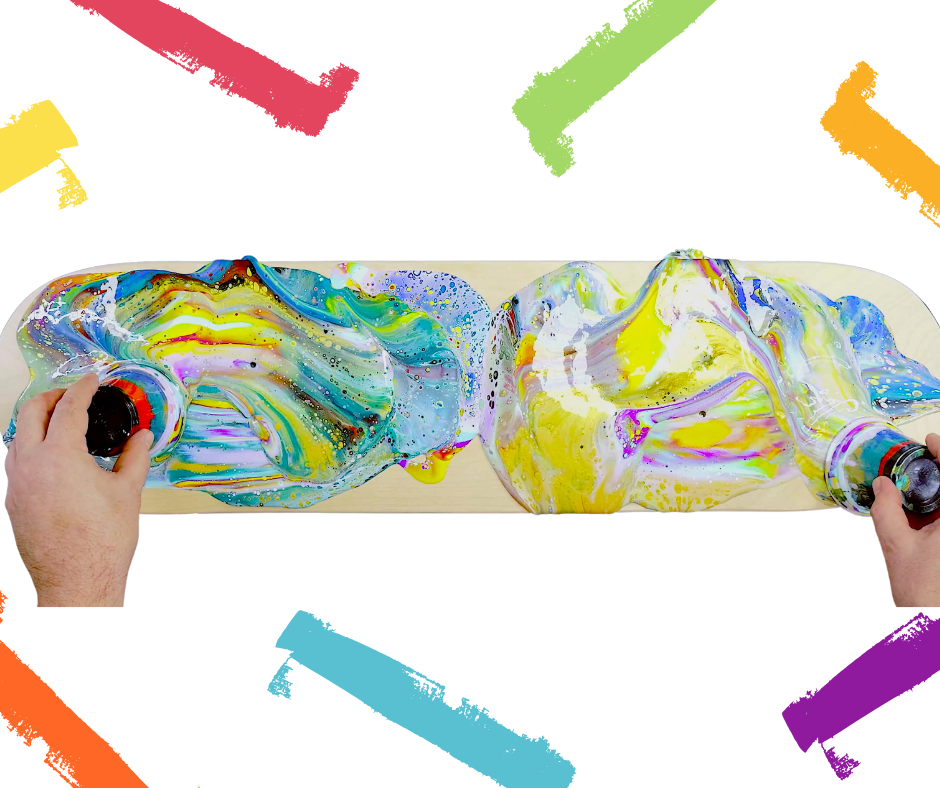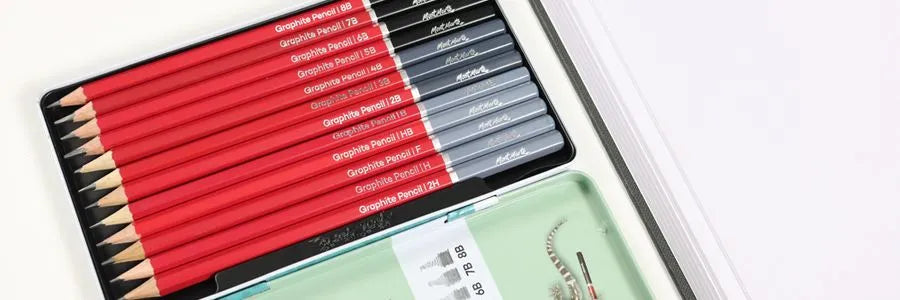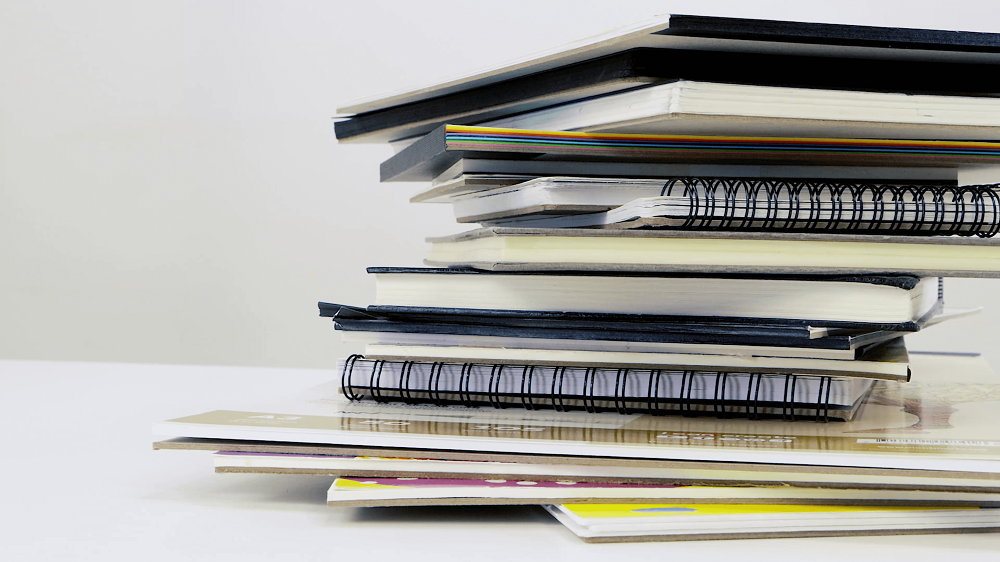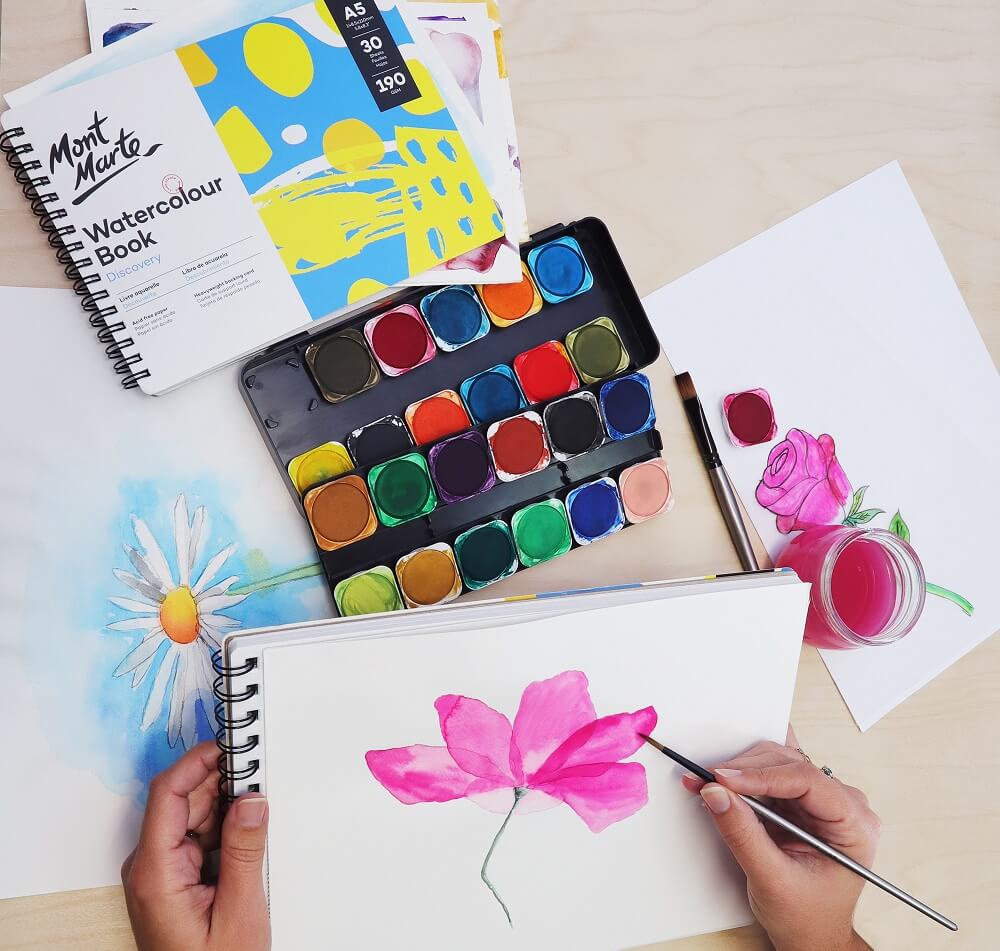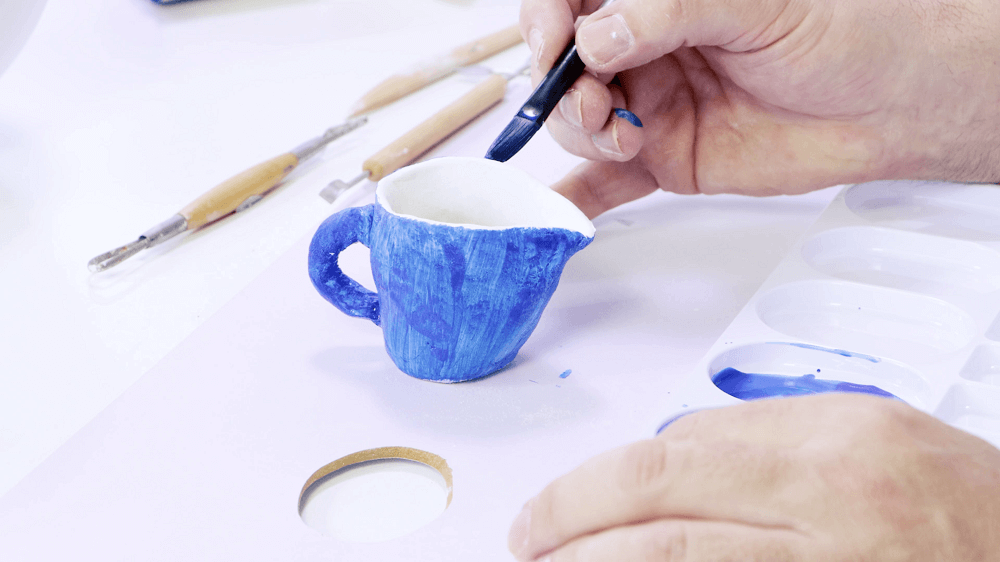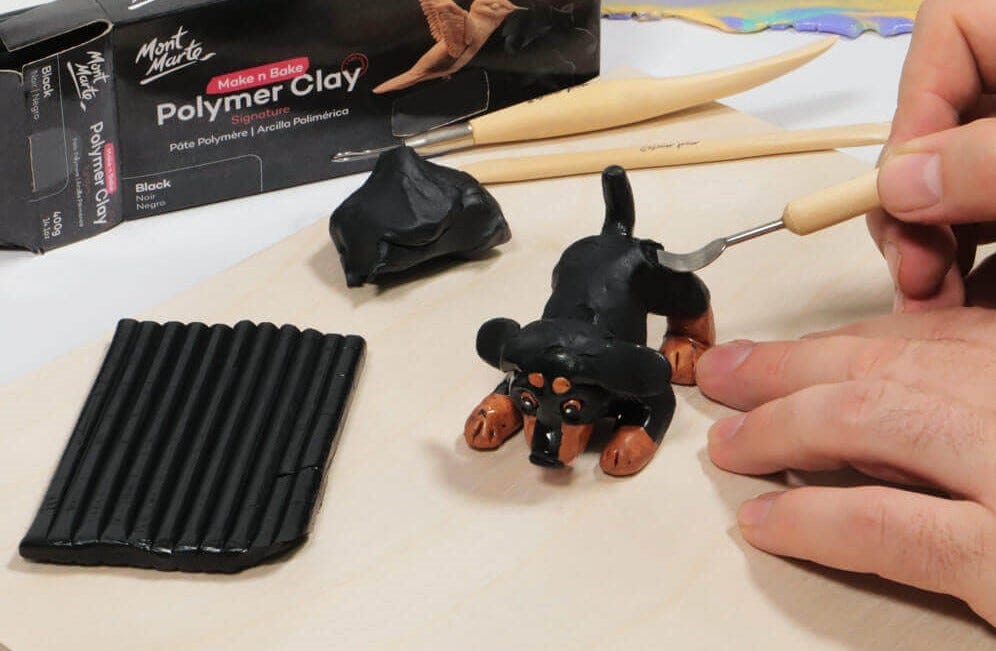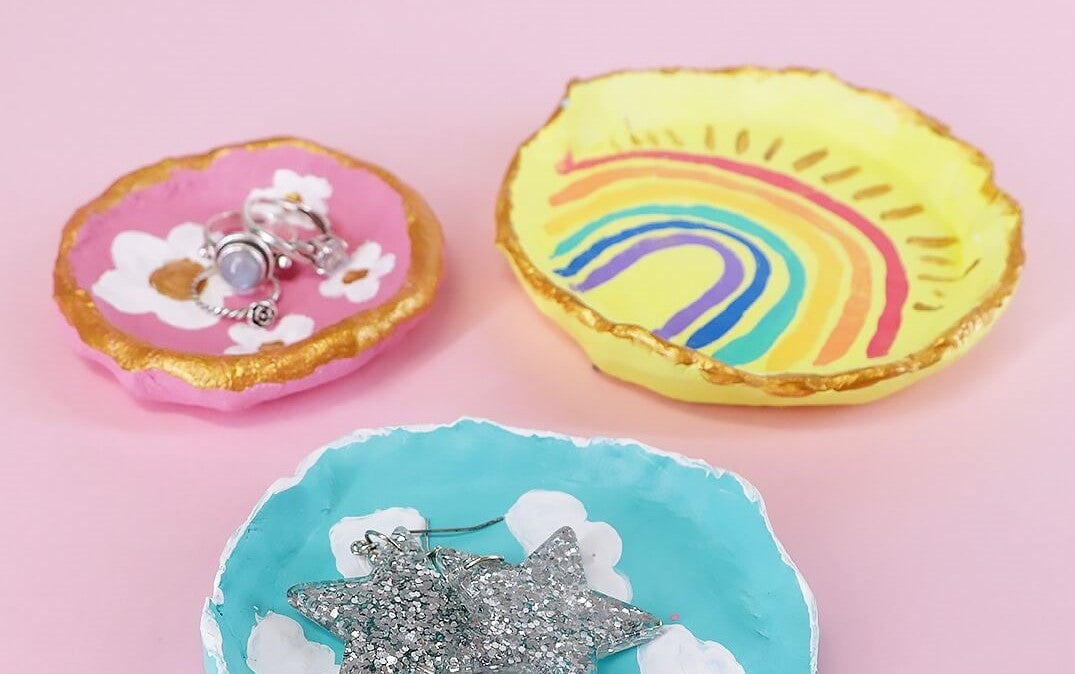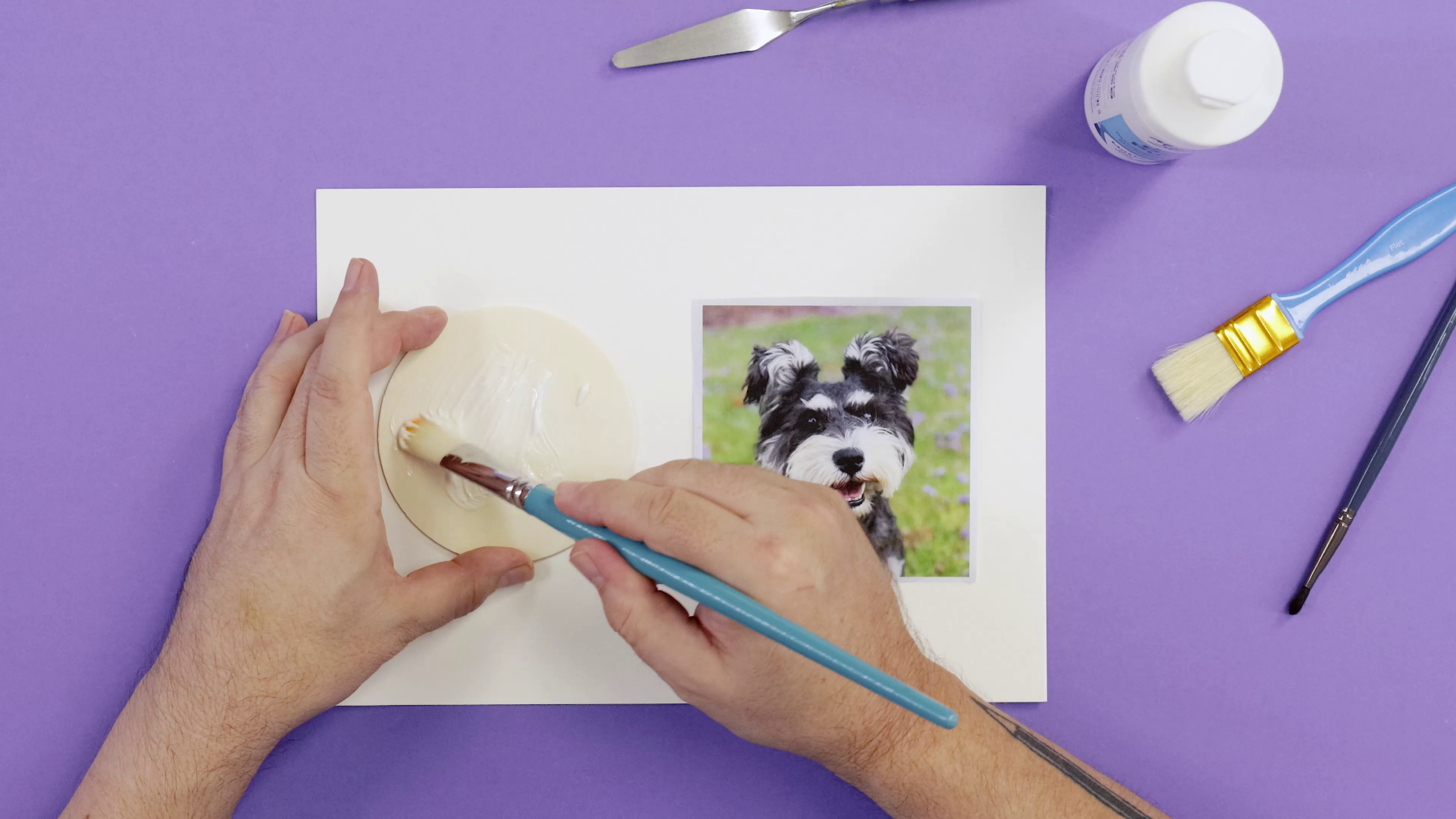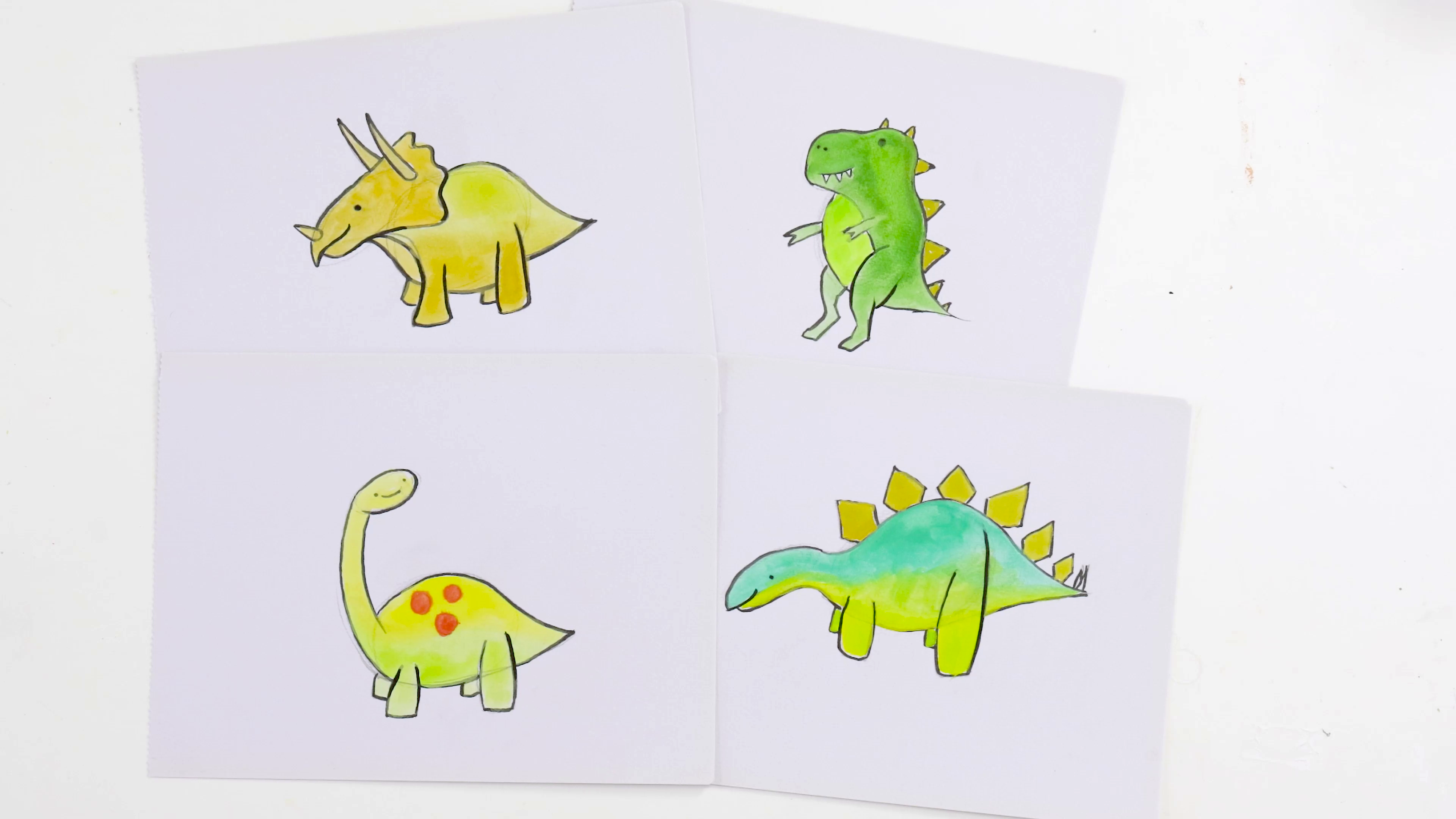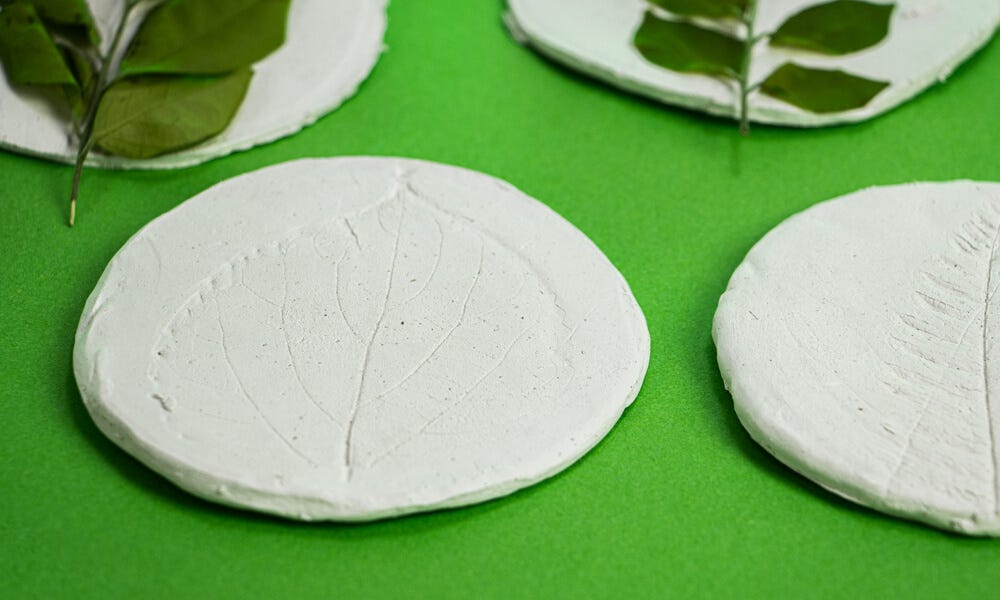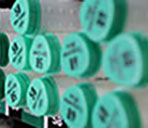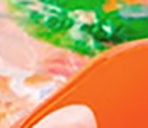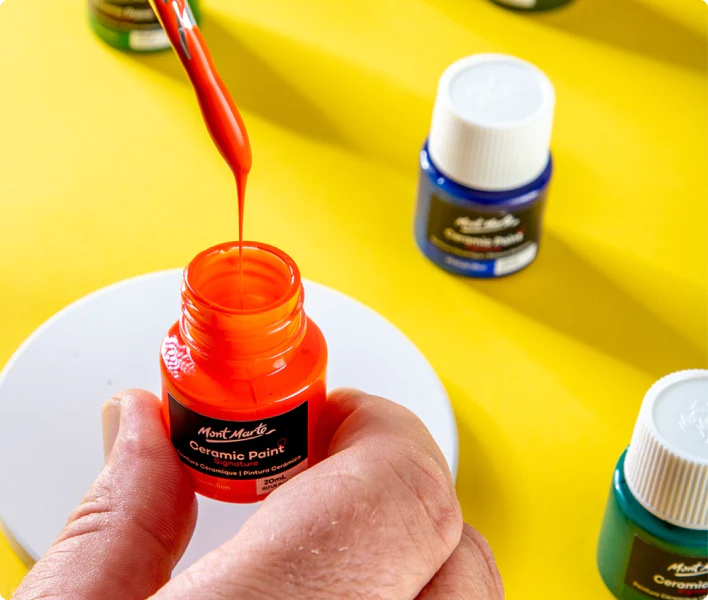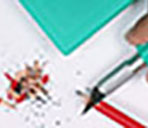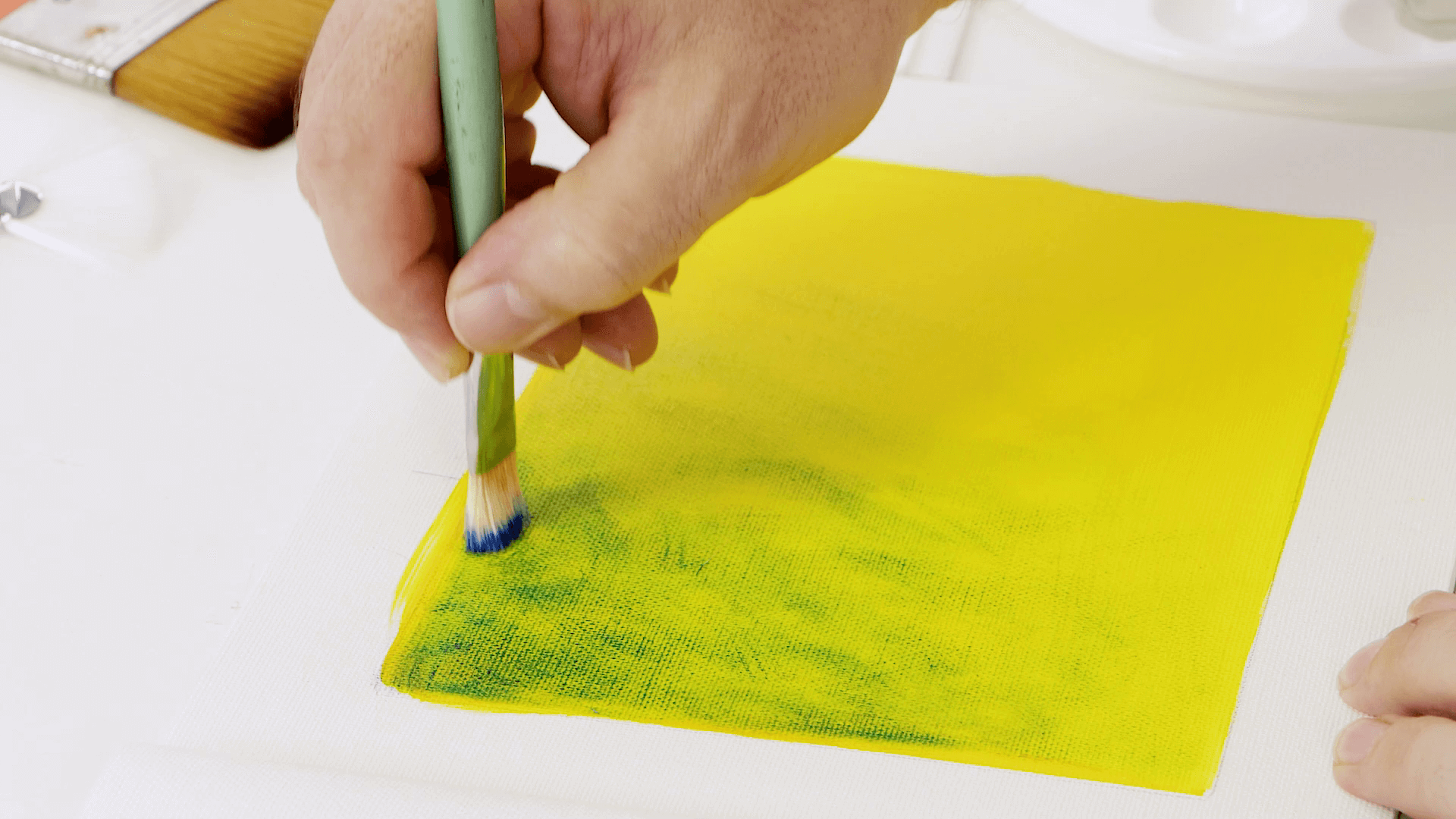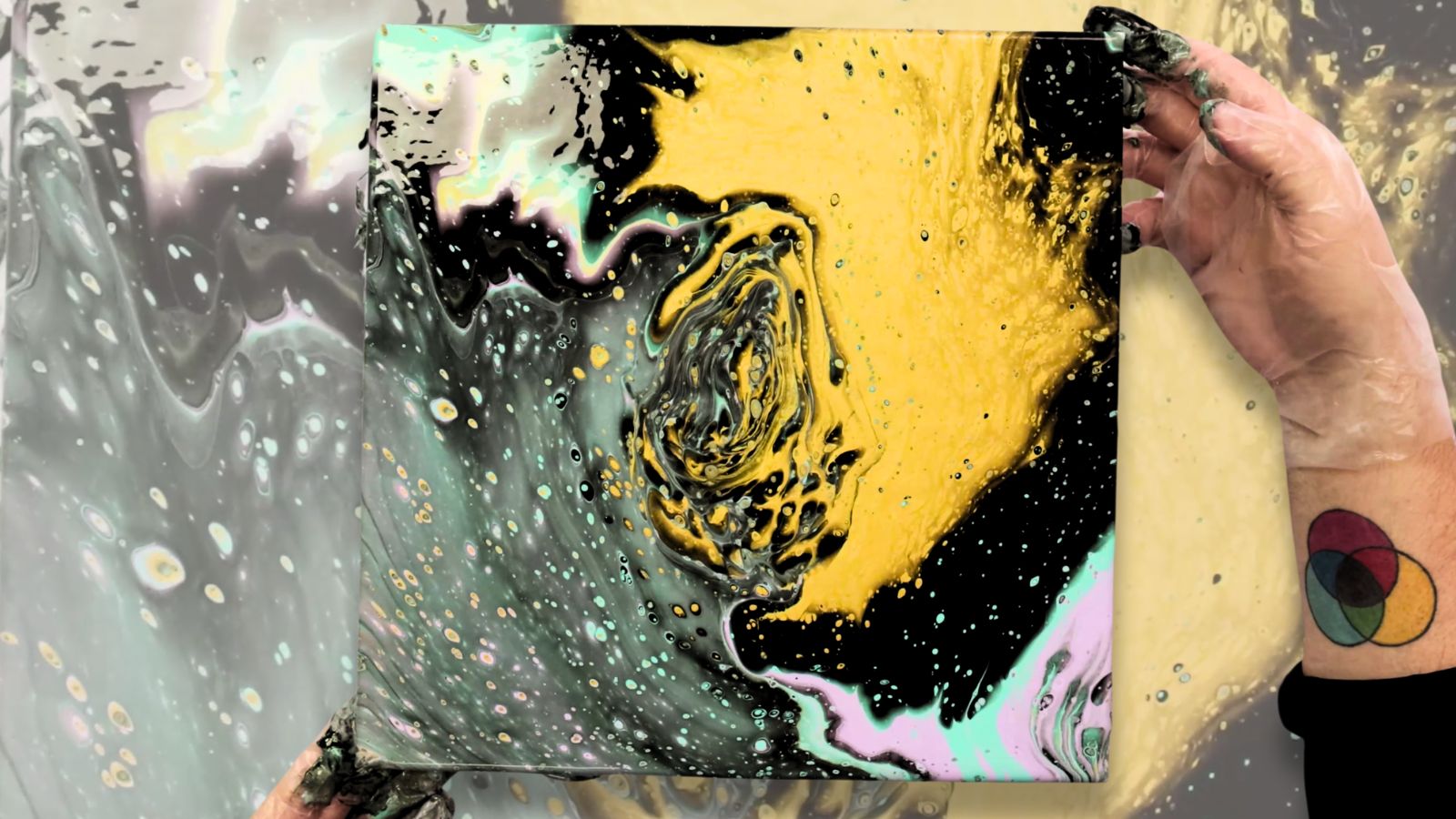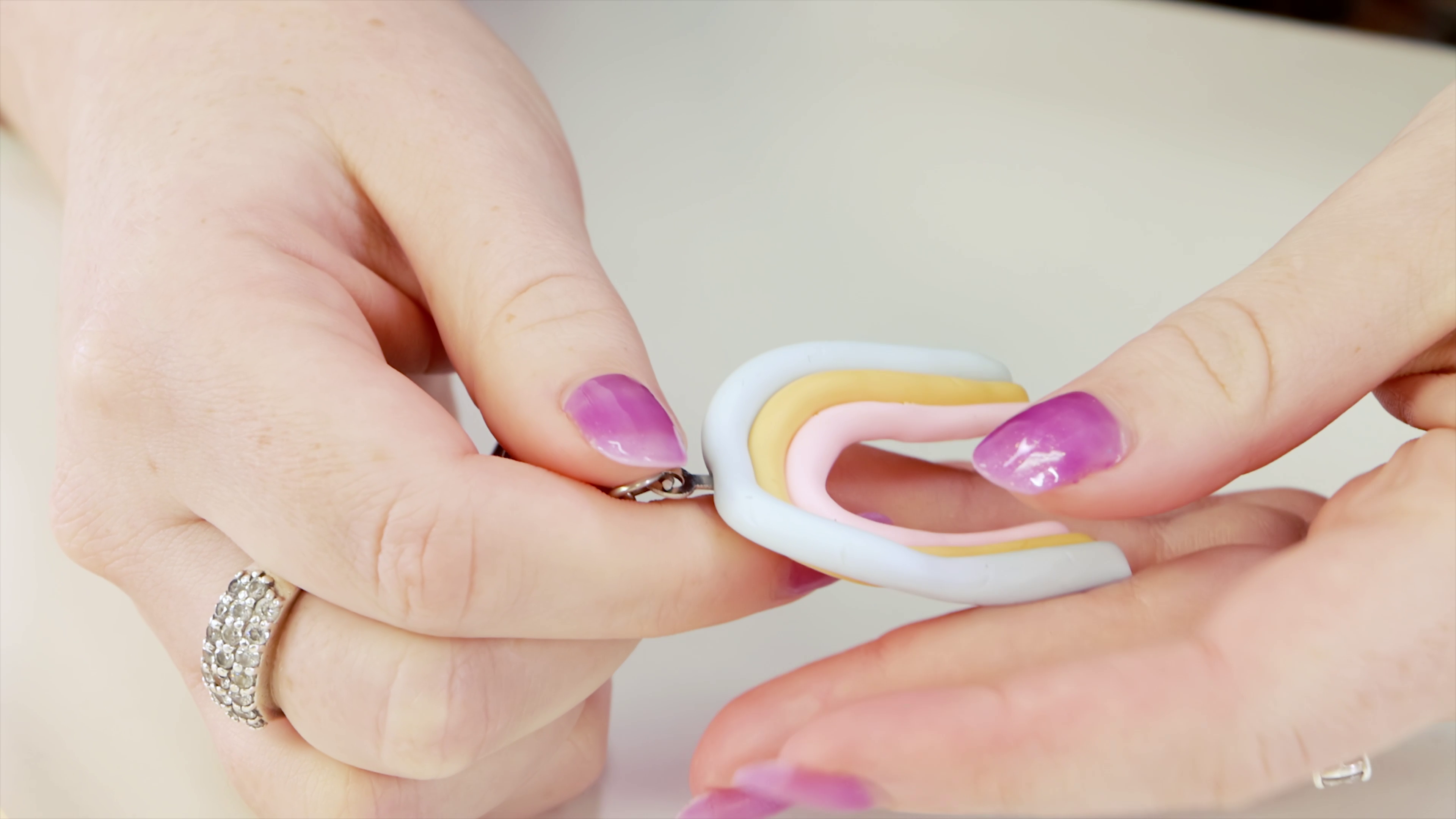It doesn’t matter if you’re looking to brush up on your technique, or if you’re just looking for something fun to add to your next work, try these paint brush techniques for yourself and see what you can create, the sky is the limit!
1. Watercolour dry brush:
When it comes to watercolours, a dry brush is a great way to add effects to your paintings. This paint brush technique will remove the moisture and lift the pigment leaving parts of the paper exposed. To use this dry brush technique, apply a wet wash as usual, then grab a dry brush and firmly press the brush to the paper.
2. Acrylic or oil dry brush:
Show off your lights and darks and create a smoke-like effect, using a dry brush technique. This paint brush technique can be used for both acrylic and oil, but when it comes to oil paints, it’s best to double check that your brush is clean and free from any oil or left-over pigment. Once you’ve laid your paint down, grab a clean, dry brush and drag it over to create lighter effects or create a worn in look.
3. Scumbling:
Scumbling is a simple paint brush technique that will add depth and can help blend objects into your works with oil or acrylic. To scumble, grab a stiff bristled brush and a small amount of pigment, then dab the paint onto the canvas. Both the dabbing and the stiff bristles will leave you with the colour underneath exposed and slightly blended into the top layer. Handy hint: make sure your paint has dried before going in with your brush or you could end up with a different result.
4. Straight stroke:
Drop the ruler and follow this paint brush technique instead, for the next time you need a straight line. To achieve a straight line freehand, use a rigger brush and hold the brush perpendicular to your working space or paper, decide where the line will start and end, then move the line quickly and smoothly, stop and then lift the brush. You want the stroke movement to come from your shoulder not your wrist and keep your little finger on the paper or work as a guide.
This might involve a little practice so grab some spare paper and try it first. Some find taking a breath out as you draw the line can help calm nerves and relax as you create the line. Experiment and see what works for you.
5. Parallel strokes
If you’re looking to create broken lines for an object or for detailing then give this paint brush technique a go. For a parallel stroke, drag the brush across the paper or canvas and as you drag the brush, move your hand closer to the paper and continue to drag the brush. When the brush reaches the point that it’s parallel to the paper, the strokes will leave a trail of broken lines.
6. Van Gogh brush strokes
You can achieve a similar style to Van Gough brush strokes using short, choppy brush strokes and impasto on a brush. For this paint brush technique, mix in some impasto on a flat filbert brush to create dimension and work quickly, using short, brush strokes in impasto. The trick to achieving this is to use a filbert brush on its side and use a ticking movement to get those short, choppy, angled lines.
7. Double loading painting technique
Not sure which colour to choose? Why not paint with both, using the double loading painting technique? Using a small flat brush and a larger flat brush, dip into the first colour and paint your second brush using the first, then dip into the second to paint the bristles of the other side of the brush. It seems odd to paint a brush using another brush, but this will be to help control the amount of paint, so the flow will be even across the two colours.
8. Stippling brush
Add texture or highlights to your work with the stippling paint brush technique. Use a densely packed round brush or a stencil brush and dip the brush into your paint, then dab the paint brush like a sponge and bounce the brush on the canvas. The stippling brush technique can be used and built up using multiple colours and layers.
9. Fan brush
Next time you’re looking for a fun brush technique to try, why not pick up a fan brush. Wet the brush first before dipping into your colour and then drag the brush across the paper or canvas to create fluid markings that can look great for grass or fur. Try with different amounts of paint and pressure to find something you like.
10. Splatter
A splatter technique can be used to create stunning sand or pebble details to your watercolour artworks. Using an old brush, dip the brush’s bristles into your colour of choice, then flick the brush hairs using your fingers. This technique will cause the paint to splatter onto the paper at random.
We hope that you feel inspired to experiment with these 10 paint brush techniques. Try them and #montmarteart or tag us @montmarteart on Instagram or Facebook, we’d love to see what you create.
Check out more of our techniques here or get started and shop our acrylic, oil or watercolour brushes.


